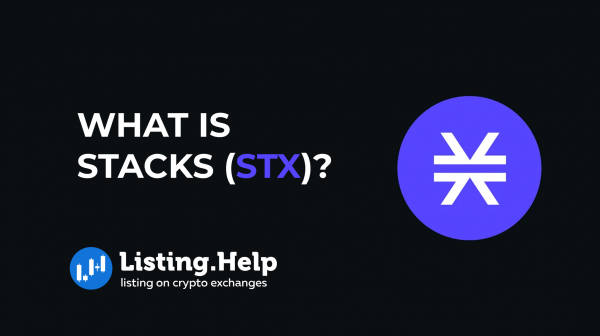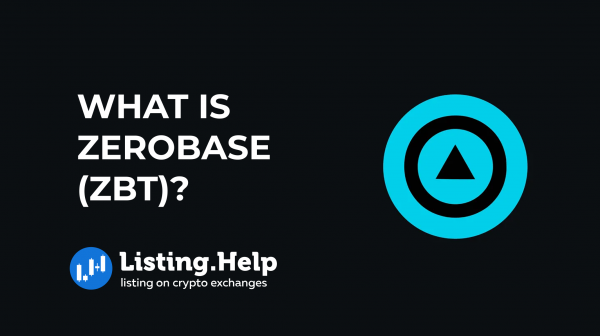What is a Hash Rate? Why Are Hash Rates Important?
 November 11, 2023
November 11, 2023 Updated: January 27 2025, 07:24
Updated: January 27 2025, 07:24
LEAVE A REQUEST
Launching your own token project? Our experts are ready to help with listing on exchanges, market making, marketing and other solutions
SUBMIT APPLICATIONIn the domain of cryptocurrency, it’s essential for investors and those participating in the mining sector to grasp the concept of hashrate, as it is pivotal to understanding the dynamics of mining and blockchain technology.
Hashrate signifies the metric that measures the computational capability of the hardware used in mining or within the blockchain network. It quantifies the miner’s performance in solving cryptographic challenges, which are central to validating and securing transactions and assembling them into the blockchain’s ledger.
The process of mining is critical to decentralized blockchain systems. Miners, through their computational work, continuously resolve a multitude of intricate mathematical puzzles. This operation validates the integrity of transactions and compiles them into the blockchain. Essentially, miners act as the custodians of the network’s integrity, ensuring that all participants adhere to the codified regulations.
To decrypt these complex puzzles, miners deploy hardware like graphics processing units (GPUs) or specialized equipment such as ASIC (Application-Specific Integrated Circuit) miners.
What Is a Hashrate?
The hashrate is essentially the speed at which a cryptocurrency miner or a network can perform operations. Hash encapsulates the complex computation that verifies transactions and integrates them into the public ledger, known as the blockchain.
In the foundational Bitcoin whitepaper, there’s an illustration that details how hashes are integral to Bitcoin transactions. Ethereum’s developer guidance also touches on this: a new batch of transactions, or a ‘block,’ comes to be by building upon the hash of the preceding block. This sequential hashing is pivotal for security and fraud prevention in the network.
A hash is essentially a fixed-length character sequence, which is the outcome of encrypting data. Different blockchains might utilize unique hashing algorithms, leading to varying hash appearances. The mining hardware on the market today is typically optimized for a specific algorithm and might not perform as well or at all on a different network.
The conversion process from data to hash is swift, and critically, it’s one-way — reversing it isn’t feasible. A single alteration in the input radically changes the resulting hash. This property ensures that each set of data can be matched to a unique hash.
Focusing on Bitcoin, its blockchain operates on the SHA-256 algorithm. Miners compete to find a block header value that’s lower than or equivalent to a given 256-bit number. To do this, they adjust a component known as the ‘nonce.’ Given the astronomical odds, finding the correct nonce typically requires numerous attempts, which is why the consensus mechanism is dubbed Proof-of-Work.
In terms of equipment, hashrate reflects the number of potential combinations a miner can test each second, with measures spanning from hashes to kilohashes and up to exahashes, with each unit being a thousandfold increase from the previous one. For example, one kilohash is a thousand hashes per second. Lastly, the network’s total hashrate aggregates the output of all mining hardware in operation.
How’s it calculated?
- Simply put, hashrate is your crypto mining speedometer, showing calculations per second. From humble hash/s for single calculations to kilohash and megahash for thousands and millions.
Reliability of Hashrates:
- Hashrates are more of an estimate than an exact science. Even specialized mining rigs with advertised hashrates can’t promise precision. Your mining software will give you the closest estimate by monitoring real-time problem-solving.
What Affects Hash Power?
- Your hashrate can swing with different factors: the gear’s quality, your internet speed, how you configure your setup, and the crowd of miners you’re up against.
How To Use Hashrates?
- Boosting hashrate boosts profits. Upgrade your equipment, adjust your settings, or switch up your mining software to squeeze out more power. Getting a grip on hashrates can be a game-changer for your mining operations or investment decisions—it’s the cornerstone of crypto mining savvy.
Why Are Hashrates Important?
A more rapid hashrate bolsters a miner’s chances to solve the cryptographic puzzle that will reward them with a new block on the blockchain. Thus, understanding the hashrate helps to estimate the probability of a miner validating a new block and receiving cryptocurrency as a reward. To put this into perspective, miners often utilize mining calculators to estimate the time required to mine a single Bitcoin based on their rig’s specific hashrate.
From an investor’s standpoint, the hashrate is a gauge of a network’s computational strength for processing and validating transactions. A robust hashrate indicates a bustling network teeming with miners, which often correlates with heightened security and investment attractiveness. It suggests that the network is less vulnerable to attacks, as more distributed power makes it harder for malicious entities to gain control.
However, there’s a critical security threshold to watch: if any single miner, or coalition of miners, should command over 50% of the network’s hashrate, the network may fall prey to a 51% attack. While rare, such an event could allow bad actors to double-spend coins and compromise blockchain integrity. Thus, a diversified hashrate spread across many miners is essential for the network’s health and resilience.
What is the Complexity of Mining?
Complexity of Mining (Network Complexity) is a value that reflects the computational effort required to mine a new block and secure a reward. This figure allows miners, equipped with knowledge about their hardware’s capability and energy usage, to gauge the potential returns from their mining activities. Based on this, miners can determine the most appropriate equipment for their goals within a specific network.
This parameter is dynamic; it adapts based on the total mining power active on the network – which is in turn affected by the cryptocurrency’s market demand. As the value of the coin climbs, so does its mining appeal, prompting more miners to join the fray, which results in increased complexity. Conversely, when a cryptocurrency wanes in popularity and its value drops, its complexity tends to fall as miners depart.
The concept of network difficulty was introduced to mirror the process of mining precious metals like gold, aiming to keep the release rate of new coins steady. Take Bitcoin as a case in point: the network aims for a consistent average of ten minutes to find each block. To maintain this pace, Bitcoin recalibrates the mining difficulty after every 2,016 blocks. If blocks are being found quicker than the ten-minute mark, the complexity ramps up. If it’s slower, the complexity decreases. This mechanism is crucial to preserving the cryptocurrency’s value by preventing an accelerated issue of new coins.
Hashrate in Cloud Mining
Engaging with cloud-based services can indeed simplify the process for those interested in cryptocurrency mining without the desire to deal with the complexities of hardware procurement, ongoing maintenance, and eventual equipment replacement. This modern approach eliminates the upfront capital investments and the risks that come with the physical handling of mining devices.
Yet, this convenience trades off with a lack of clarity, especially when it comes to the hashrate you’re actually procuring. Service subscribers are often left without crucial details — the performance level, the current operational condition, or even the geographic location of the hardware — which remain undisclosed. The opacity surrounding the hashrate and the equipment specifications makes it challenging, if not impossible, to make informed decisions or to accurately project potential returns from the leased hardware.
In conclusion
It is imperative for investors to acknowledge the critical importance of hashrate as a definitive indicator of a cryptocurrency’s network health and its inherent security measures. For miners, an understanding and application of hashrate data is crucial, serving as a fundamental tool to refine their mining operations, enhance the likelihood of block discovery, and consequently, increase the potential for reward.

With this understanding as our foundation, I extend to you an invitation to explore these concepts further. Our blog, accessible at https://listing.help/blog/, offers a wealth of in-depth analysis and commentary designed to equip investors and miners alike with the knowledge required to navigate the cryptocurrency landscape with authority and foresight.







 December 29, 2025
December 29, 2025 








